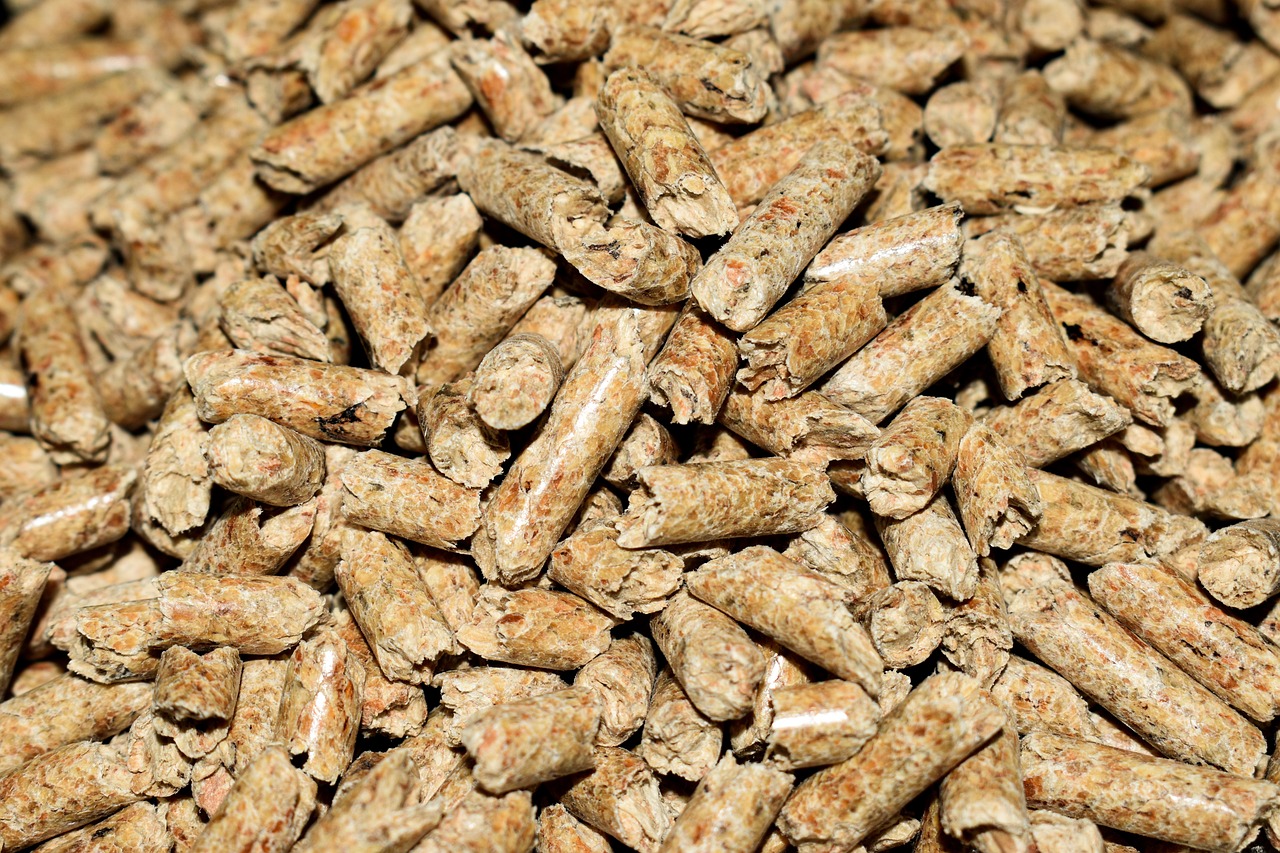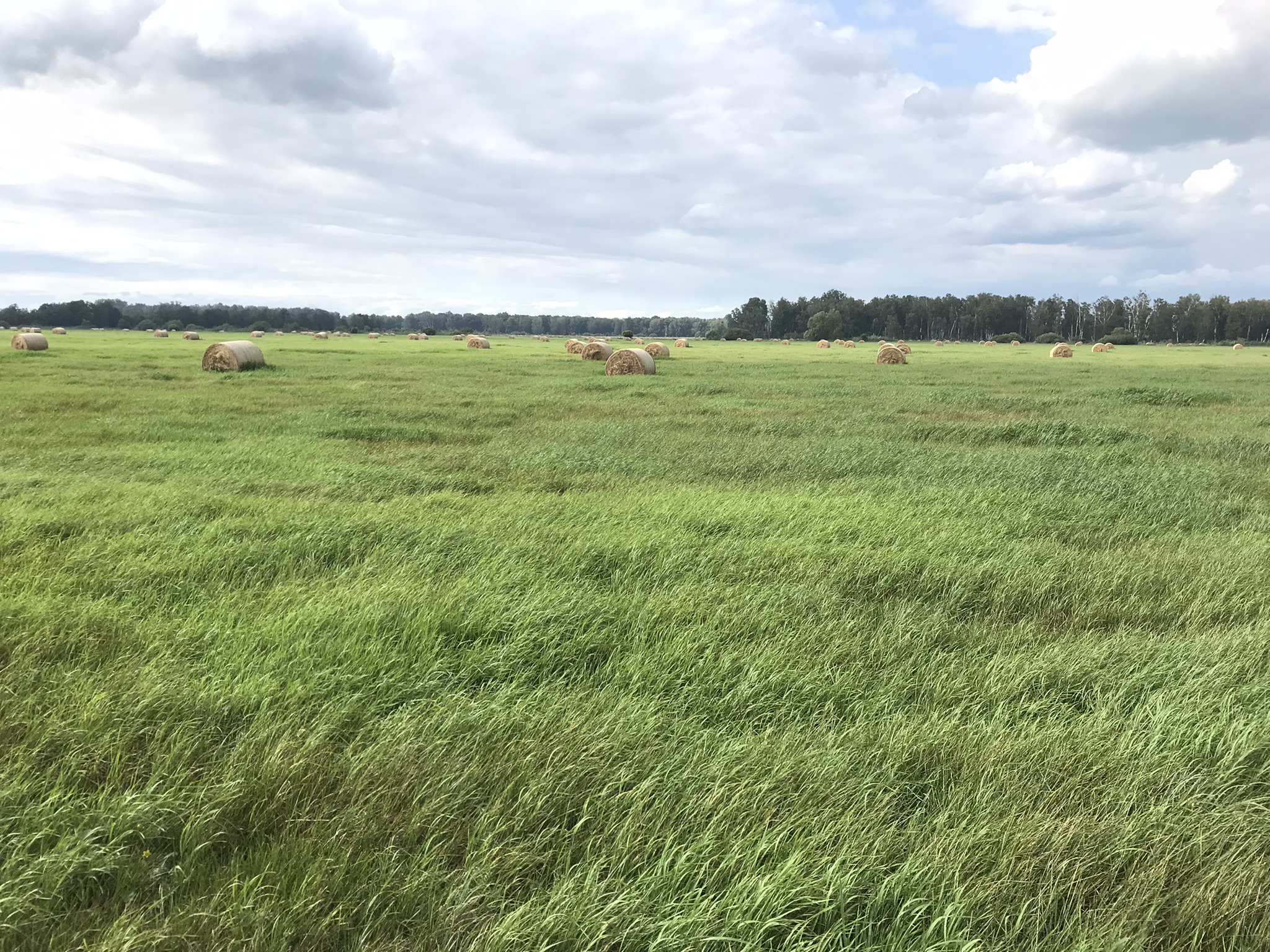
Paludiculture in Peat Soils
The project is located in Brandenburg, covering parts of Brandenburger, Havelland, Oberhavel, and Ostprignitz-Ruppin. The region is characterised by diverse landscapes including grasslands, lakes, wetlands, and forests. The use case specifically targets drained peat soils over 1 meter thick, with high water tables and natural grasslands. These rewetted fenlands support unique ecosystems but have been environmentally degraded by previous land use.
📍 Location: Havelländisches Luch and Rhinluch regions, Brandenburg, Germany
🌾 Area: 165000 ha
🌡️ Climate: Wet-humid
🌱 Bio-based products: Pellets, substrates, fibre materials (via twin-screw extrusion)


Main Challenges
The German use case addresses the degradation of drained fenlands, peat-rich grasslands with high ecological value. These lands were historically drained for cattle feed production, resulting in habitat loss, greenhouse gas emissions, and changes in water systems. Biophysical constraints such as deep peat layers, high groundwater levels, and waterlogged soil conditions make them difficult to manage and restore, but also offer unique potential for climate-smart, low-impact cultivation.
Socioeconomic factors

Land use conditions – Competing uses of land and natural resources in the use case area, with regulatory requirements to protect biodiversity and reduce CO2 emissions, among other things, limit the scope of action and land use options for farmers.

Lack of economic viability – The low yields and quality of the grasslands make traditional management of the land for dairy farming economically unviable. The current alternative uses, such as suckler cow husbandry, are becoming increasingly uneconomical.

Stakeholder characteristics and engagement – The highly heterogeneous structure and cultural cha racteristics of rural businesses make it difficult to coordinate and implement common strategies, collaborative structures, and processes.
Solution with Margin-Up!
This use case promotes the restoration and use of rewetted peatlands through paludiculture, the cultivation of wetland-adapted biomass. The focus is on harvesting naturally growing fenland plants (Reed Canary Grass, Reed, Cattail and Sedges) and converting them into pellets, substrates, animal bedding, fertilisers and other materials for the bioeconomy. Through collaboration with research institutions and industrial partners, the project tests and adapts processing technologies like twin-screw extrusion to improve the usability and market readiness of the biomass.


Benefits
MarginUp!’s proposed alternative land uses offer various social, environmental, and economic benefits.
Biodiversity enhancement
Circular use of biomass
Replication potential
New regional business models
GHG emissions reduction
Soil health
Stakeholders Engagement
- Local farmers and landowners
- Farming cooperatives
- Research institutes
- Local manufacturers and bioeconomy industries
- Drying and processing companies
- Policymakers and public authorities
- Water and environmental agencies
Interest Groups
- Peatland managers in other regions
- Bio-based product developers
- Climate and environmental NGOs
- Regional development agencies
- Ecotourism promoters
- Policy and funding bodies
Implemented actions
Over the past two years, biomass from rewetted fenlands was harvested and processed into pellets and substrates through a collaboration between a research institute and an industrial partner. Twin-screw extrusion technology was adapted to better defibrate fibre and make biomass usable for various applications. Adjustments to aperture size and moisture levels were made to improve extrusion outcomes. To reduce climate-related storage losses, a moisture control strategy was developed. Continuous dialogue with farmers and industry stakeholders has supported innovation and implementation.
Timeline
Biomass was harvested, and initial pellet and substrate production started.
Twin-screw extrusion tested and modified for wetland biomass.
Moisture control strategies developed to improve storage and reduce losses.
Scale-up of biomass processing and side-stream valorisation concept.
Finalise self-sustaining supply chain and policy recommendations.
Expected results
- Demonstration of paludiculture biomass as a viable resource.
- Technical optimisation of extrusion for wetland biomass.
- Development of marketable substrates, pellets, and fibre-based products.
- Insights into cost-efficiency and logistics for scaling up.
- A replicable circular model linking rewetted lands to bioeconomy applications.
Replication potential
The German use case offers strong replication potential in other rewetted peatland areas across Europe. The use of paludiculture for biomass harvesting can be adapted to similar fenland sites. The twin-screw extrusion technology and moisture control strategies developed can support broader industrial uptake. Market applications, such as substrates, biofuels, and animal bedding, open multiple replication paths. The circular value chain also aligns well with EU biodiversity, restoration, and climate goals.
